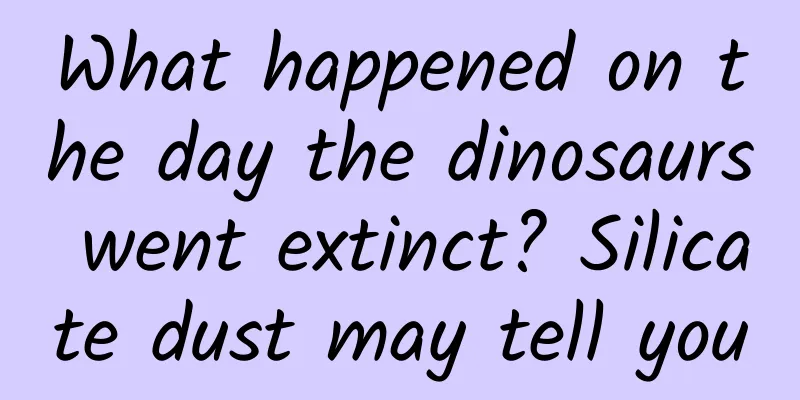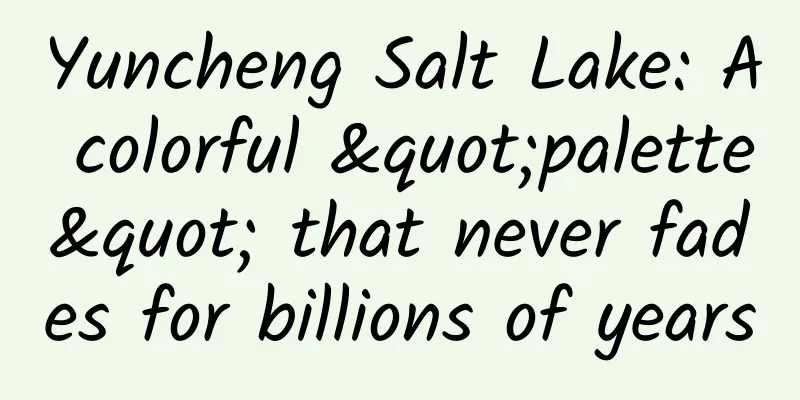What happened on the day the dinosaurs went extinct? Silicate dust may tell you

|
Science Times reporter Wu Tong A climate research paper recently published in Nature Geoscience, a professional academic journal under Springer Nature, believes that the fine silicate dust caused by the rock crushing when the Chicxulub meteorite hit the earth may have played a major role in global climate cooling and the destruction of photosynthesis. These may be one of the main reasons for the extinction of dinosaurs. Dinosaurs are a type of animal that lived between about 240 million and 65 million years ago and could walk upright using their hind limbs to support their bodies. The paper said that the Chicxulub meteorite impact on Earth has long been believed to have triggered a global cold winter 66 million years ago, leading to the extinction of dinosaurs and about 75% of species on Earth. However, there is still controversy over the impact of various debris ejected on the climate, and it is not clear what caused the mass extinction. Past studies have believed that sulfur released by the impact and smoke from wildfires after the impact were the main driving forces for the formation of severe cold, but people did not think that the size of silicate dust particles ejected into the atmosphere was the main factor. To assess the impact of sulfur, soot and silica dust on the climate after the Chicxulub meteorite hit the Earth, the first author and corresponding author of the paper, together with colleagues and collaborators, created a paleoclimate model based on the analysis of fine-grained materials in a well-preserved impact sediment in North Dakota, U.S.A. In their study, they found that the particle size distribution of silicate debris of about 0.8-8.0 microns indicated that the role of fine dust was greater than previously estimated. The authors input the measured particle sizes into a climate model and estimate that such fine dust could have remained in the atmosphere for 15 years after the Chicxulub meteorite hit Earth, causing the Earth's surface to cool by as much as 15°C. They believe that changes in solar radiation caused by the dust could also have stopped photosynthesis for nearly two years after the impact. The authors say the cooling effect of silicate dust, as well as soot and sulfur, would have hampered photosynthesis, allowing the cold to persist long enough to trigger a chain extinction reaction. |
<<: "Old people use 9 keys, young people use 26 keys"? Your typing habits have betrayed you...
>>: When an asteroid strikes, what else can we do except let the Earth wander?
Recommend
Where is the future of new media operations?
A few months ago, a friend who works in new media...
After promoting tens of millions of information flows, I have summarized these 6 points!
In today's mobile Internet era, we receive a ...
Activity operation sandbox/activation engine
We have talked about so many recommendation algor...
Zhao Dongxuan: New strategies for acquiring customers in 6 major industries (65 lessons)
Zhao Dongxuan: New Strategies for Customer Acquisi...
Bemisia tabaci: How the world's only "super pest" came to be
Bemisia whitefly is recognized as the world's...
In addition to display functions, the mobile phone screen can also detect body temperature and DNA
How useful is a mobile phone screen? In addition t...
An analysis of how to play private domain traffic across platforms!
Private domain traffic is not exclusive to the We...
Android Control WebView
How to open a website in an Android app? Google h...
Xinzhu "30-day hand-painting training camp: Become a hand-painting master even with zero basics"
Xinzhu's "30-Day Hand-Painting Training ...
A Beginner’s Guide to Live Selling on Video Accounts!
With the frequent updates and iterations of video...
SMIC Financial Report: SMIC's revenue in fiscal year 2024 reached 57.796 billion yuan, a record high, an increase of 27.72%
The "chip king" SMIC (688981.SH, 00981....
Exploration and practice of intelligent film performance optimization
I. Introduction All editing tools have the abilit...
Wuhan tea tasting recommendations
Wuhan Tea Tasting Contact Information I strongly ...
Cucumbers are obviously green, so why are they called cucumbers?
This article was reviewed by Sun Hai, a plant sci...
How to attract traffic and monetize through WeChat red envelope covers?
Today I want to ask you a few questions, and you ...









